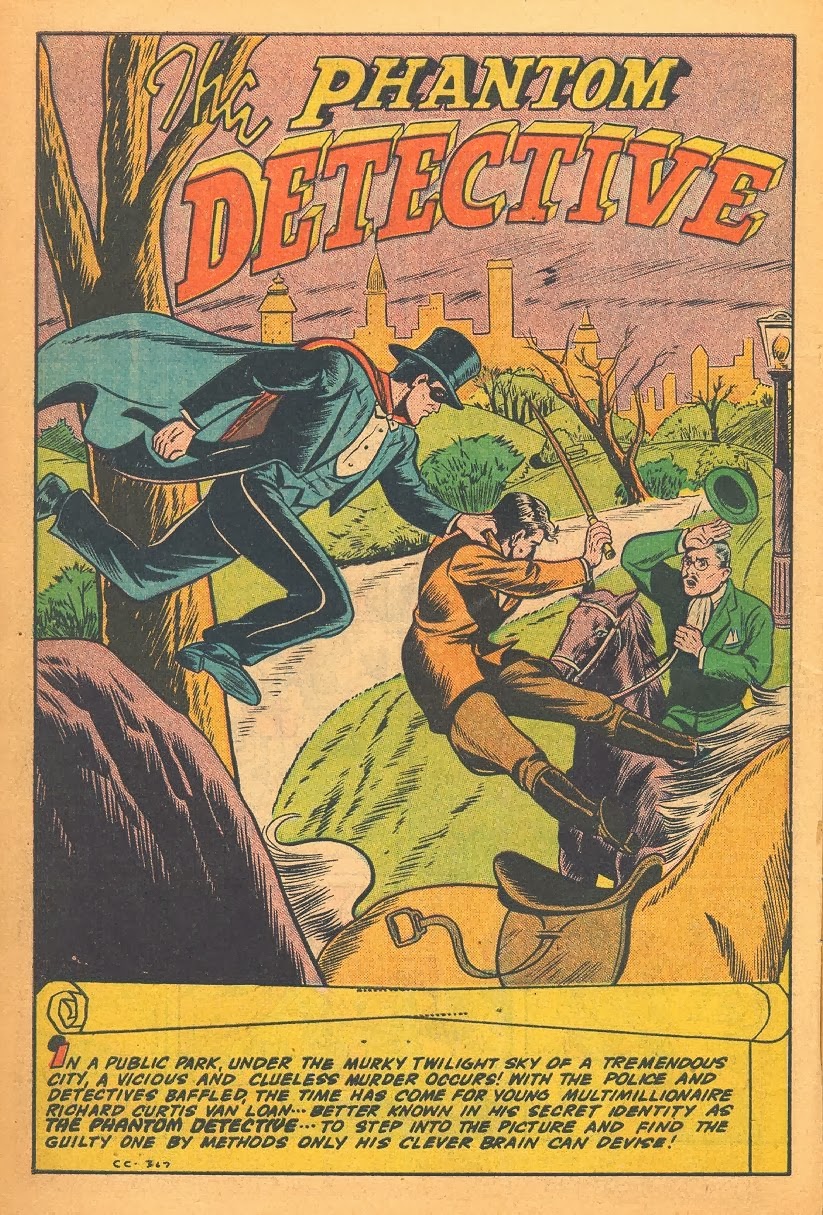The Phantom Detective
After the debut of The Shadow in 1931, pulp publishers were scrambling for a hero
title to match The Shadow’s popularity with readers. The first to arrive on the
stands was The Phantom Detective in
1933. At first, STREET & SMITH yelled
lawsuit, as they thought the new character from STANDARD was a blatant rip off of their character. But before the
ink was dry, POPULAR PUBLICATIONS had
The Spider & Operator #5 and ACE had Secret Agent X as their leads. The pulp heroes were taking the
public by storm and The Shadow was
no longer alone.
Spinner Rack With Phantom Detective Pulps
Although The
Phantom Detective did not have as many issues as The Shadow, it did outlast the Master of Darkness in number of
years. The Shadow ran from 1931 to
1949, with 325 stories, a total of 18 years. The Phantom Detective only
had 171 issues, but lasted 20 years, from 1933 to 1953, and became the
longest-running hero title in the pulp magazines.
Phantom Detective Paperback
Some even argue that The Phantom Detective actually lasted longer than the official
record indicates. In 1932 STANDARD ran
a serialized novel in one of their pulp magazines titled Alias Mr. Death by G. Wayman Jones (D.L. Champion). Mr. Death was merely retooled to become
The Phantom Detective. If that
wasn’t enough, researchers of also discovered numerous rejected Phantom Detective stories that were
published as other characters, so the 171 may someday be altered. And it gets
even murkier than this. One of the Doc
Savage authors took his unpublished Doc
Savage yarns and turned them into Phantom
Detective stories. And one more curiosity, a final Phantom Detective author was also writing Shadow radio scripts, and in one of his Phantom Detective yarns he accidentally calls him The Shadow. Only in the pulps, right?
Phantom Detective Comic Book

The matinee serials, or chapter plays, at the local
theaters drew upon the other media of the day for their popular cliffhangers. There
were probably a dozen Zorro serials.
Comic Books like Superman, Captain
Marvel, Captain America, and others, were made into exciting serials; the
pulp characters also had their turn at celluloid fame. The Shadow, The Spider, Tailspin Tommy, G-Men, and many others were
made into serials to attract kids to the matinees. So too did the comic strips, like Flash Gordon, Buck Rogers, The Phantom, and Mandrake, and many
others. When too much money was asked for the Rights to a character, the
producers of serials made up their own characters. Bidding for the first Superman serial in 1940 broke down
because of the money Detective Comics
wanted for the Rights, so the movie that had already been planned had to change
the name of the hero. From Superman,
he became The Copperhead, and the
serial was The Mysterious Dr. Satan.
Comic strips’ The Phantom (The Ghost Who
Walks) made one serial and planned a second. The producers decided against
the high fee on the second, so the character was changed to Captain Africa. And yes, negotiations
were rumored for a chapter play featuring The
Phantom Detective, but one never appeared. However, about the time everyone
expected this one to show up, a very interesting serial did appear. It was
titled The Black Widow, and had all
the elements of The Phantom Detective, except
for, yep, The Phantom Detective. Still,
he was there, even if not in name and appearance. I saw the serial either at the Gem or Tower Theater around 1947.
The Black Widow Serial
The era of the Thirties and Forties was one of the
most exciting times for children and young adults looking for escapism. Though
the times were harsh, the entertainment was wonderful. Pulps, comic books,
picture shows, and serials truly were at the zenith of their achievements for
the youth of America. Today’s entertainment, with the sex, extreme violence,
and gutter language can never match those simpler times, when the world needed
heroes, and children needed someone to look up to, even if they weren’t real,
they could be found in their favorite form of entertainment.
Friends of The Phantom ID Card






No comments:
Post a Comment